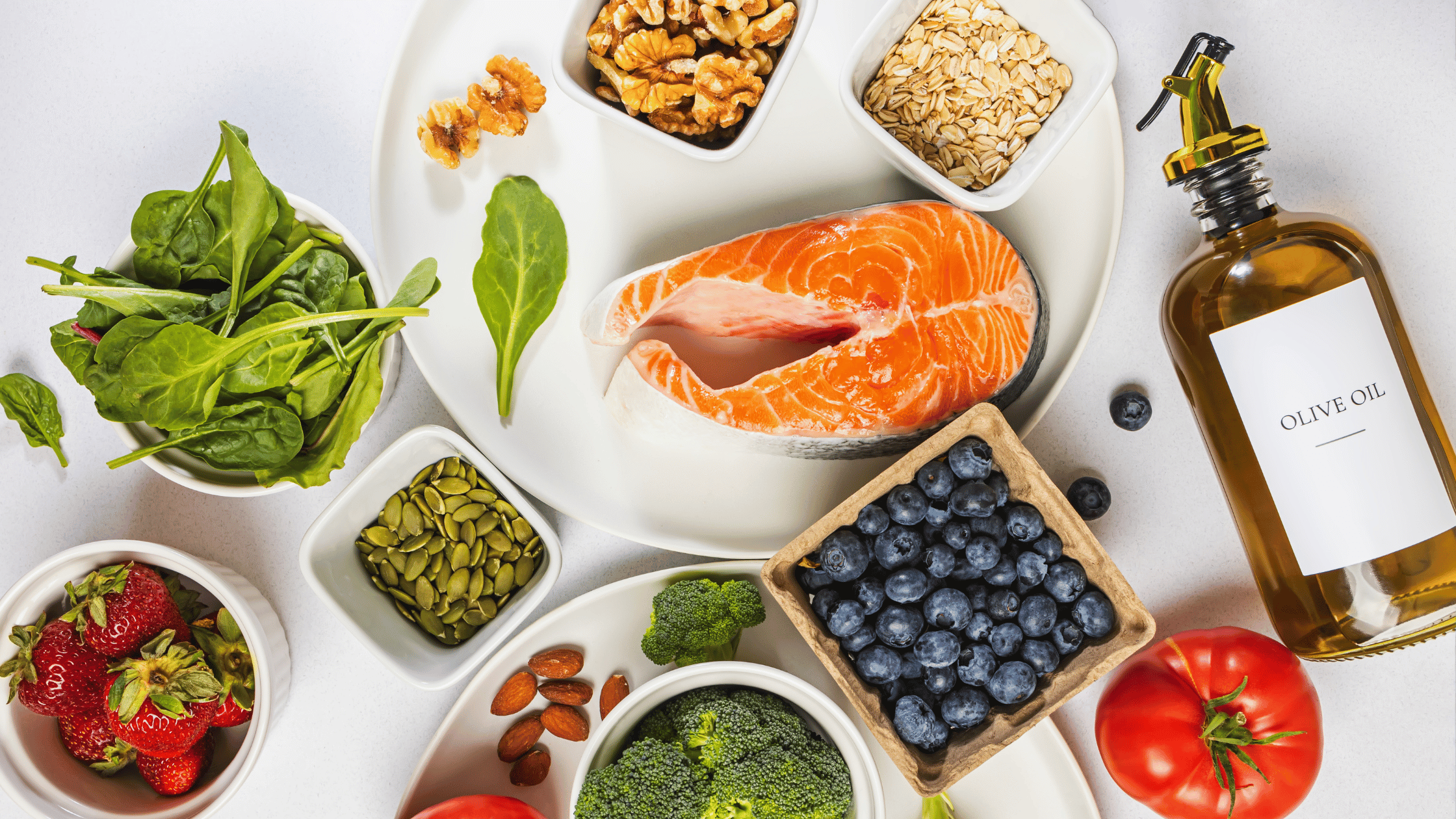Adhesive Arachnoiditis is a chronic, painful condition caused by inflammation of the arachnoid mater—the delicate middle layer of the meninges surrounding the spinal cord. This inflammation leads to scar tissue formation, which can entrap nerves and result in severe pain, neurological deficits, and progressive disability. While the exact causes vary, common triggers include spinal surgeries, epidural steroid injections, infections, and chemical irritants.
One of the most critical factors in managing Adhesive Arachnoiditis is controlling inflammation—both at the site of nerve damage and systemically throughout the body. Diet plays a crucial role in either fueling inflammation or fighting it, which makes nutritional choices an essential part of any arachnoiditis management plan.
This post will explore the link between inflammation and diet, discuss how specific foods impact inflammation, and provide a comprehensive chart categorizing inflammatory and anti-inflammatory foods.
Understanding Inflammation in Adhesive Arachnoiditis
Inflammation is the body’s natural response to injury or infection. In acute cases, it helps with healing. However, chronic inflammation—which occurs when the immune system remains activated over time—can contribute to worsening symptoms in conditions like AA.
In AA, inflammation:
- Causes persistent pain by irritating nerve endings.
- Promotes the formation of fibrous adhesions (scar tissue), worsening nerve entrapment.
- Leads to neuroinflammation, which can contribute to brain fog, fatigue, and depression.
Since diet has a direct impact on inflammation, avoiding inflammatory foods and incorporating anti-inflammatory ones can help modulate immune responses and possibly slow the progression of symptoms.
How Diet Influences Inflammation
Certain foods promote inflammation, while others work to reduce oxidative stress and lower inflammatory markers. Key dietary factors affecting inflammation include:
Omega-6 vs. Omega-3 Balance
- Omega-6 fatty acids (found in vegetable oils, processed foods, and fried foods) promote pro-inflammatory prostaglandins.
- Omega-3 fatty acids (found in fatty fish, walnuts, and flaxseeds) reduce inflammation by producing anti-inflammatory eicosanoids.
Sugar and Processed Carbohydrates
- Refined sugars and carbs cause spikes in blood sugar, triggering an inflammatory response.
- These foods increase Advanced Glycation End Products (AGEs), which damage cells and promote inflammation.
Gut Health and the Microbiome
- A poor diet disrupts gut bacteria, leading to leaky gut syndrome, where harmful particles enter the bloodstream and trigger inflammation.
- Probiotic-rich foods, fiber, and fermented foods support a healthy gut microbiome, reducing inflammation.
Antioxidants and Phytonutrients
- Polyphenols, flavonoids, and vitamins (like vitamin C and E) neutralize free radicals, reducing inflammation.
- Leafy greens, berries, and spices like turmeric and ginger contain potent anti-inflammatory compounds.
Inflammatory vs. Anti-Inflammatory Foods
A well-balanced diet tailored to managing arachnoiditis should limit inflammatory foods and prioritize anti-inflammatory foods. Below is a detailed chart breaking down these food groups.
Comprehensive Chart of Inflammatory & Anti-Inflammatory Foods
| Category | Inflammatory Foods (To Avoid) | Anti-Inflammatory Foods (To Include) |
|---|---|---|
| Fats & Oils | Vegetable oils (soybean, corn, canola), margarine, hydrogenated oils | Extra virgin olive oil, avocado oil, coconut oil, flaxseed oil, grass-fed butter |
| Proteins | Processed meats (bacon, sausage, hot dogs), farmed fish, grain-fed beef | Wild-caught fish (salmon, mackerel, sardines), pasture-raised poultry, grass-fed beef, organic eggs |
| Dairy | Conventional milk, cheese, ice cream, processed dairy | Goat or sheep milk, unsweetened yogurt, organic grass-fed dairy, dairy alternatives (almond, coconut, or oat milk) |
| Grains | White bread, refined grains, pasta, breakfast cereals | Whole grains (quinoa, brown rice, oats, millet, buckwheat) |
| Sugars | White sugar, corn syrup, artificial sweeteners (aspartame, sucralose) | Raw honey, maple syrup, monk fruit, stevia, dark chocolate (70%+ cacao) |
| Vegetables | French fries, canned vegetables with additives, nightshades (tomatoes, peppers, eggplants—may trigger inflammation for some) | Leafy greens (spinach, kale, Swiss chard), cruciferous vegetables (broccoli, cauliflower, Brussels sprouts), beets, carrots |
| Fruits | Processed fruit juices, dried fruits with added sugar | Berries (blueberries, strawberries, raspberries), cherries, oranges, papaya, kiwi, pomegranate |
| Legumes | Canned beans with preservatives, soy products (if highly processed) | Lentils, chickpeas, black beans, organic soy (tofu, tempeh, edamame) |
| Nuts & Seeds | Peanuts (often inflammatory), processed trail mixes with added sugar | Walnuts, almonds, flaxseeds, chia seeds, pumpkin seeds |
| Beverages | Sugary sodas, alcohol, energy drinks, high-sugar coffee creamers | Green tea, herbal teas (turmeric, ginger, chamomile), bone broth, fresh-pressed vegetable juices |
| Spices & Herbs | Excess salt, MSG, artificial seasonings | Turmeric, ginger, garlic, rosemary, cinnamon, black pepper, oregano |
Crafting an Anti-Inflammatory Diet Plan
If you suffer from adhesive arachnoiditis, consider making gradual dietary shifts. Here’s an example of an anti-inflammatory meal plan to help reduce symptoms:
Breakfast
- Scrambled eggs with spinach and avocado
- A bowl of steel-cut oats topped with chia seeds, walnuts, and blueberries
- Herbal tea with turmeric and ginger
Lunch
- Grilled wild-caught salmon with roasted Brussels sprouts and quinoa
- Mixed greens salad with olive oil, walnuts, and pomegranate seeds
- A side of fermented sauerkraut for gut health
Dinner
- Grilled chicken with steamed broccoli, carrots, and cauliflower mash
- Lentil soup with turmeric and garlic
- A cup of green tea
Snacks
- A handful of almonds and dark chocolate
- Greek yogurt with cinnamon and honey
- Fresh celery sticks with almond butter
Conclusion
For those living with adhesive arachnoiditis, dietary choices can significantly impact inflammation, pain levels, and overall quality of life. While diet won’t reverse AA, incorporating anti-inflammatory foods and reducing pro-inflammatory ones may help manage symptoms and support nerve health.
By focusing on whole, unprocessed foods, increasing omega-3 intake, reducing sugar and refined carbs, and supporting gut health, you can take a proactive approach in managing your condition.
Are you currently following an anti-inflammatory diet for AA? What changes have helped you the most? Share your experiences in the comments!
Disclaimer: This blog post reflects my personal experience and is not intended as medical advice. Always consult with a healthcare professional before making any changes to your treatment plan.
